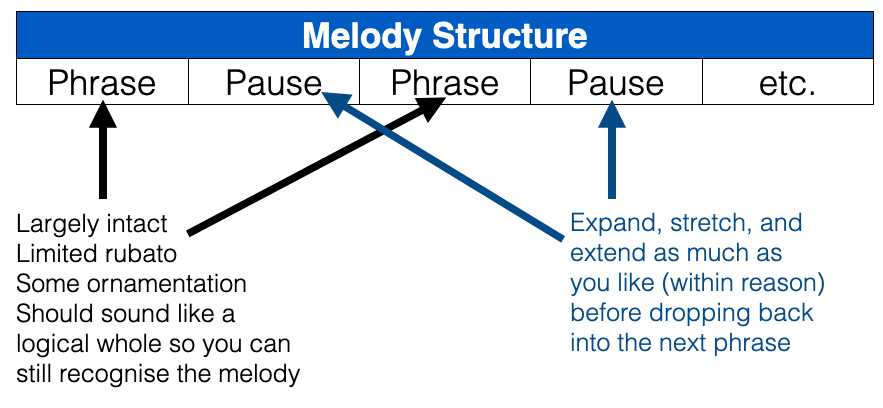Introduction
When you’re learning to play an instrument you are always told to play in tempo. This is, of course, important, especially if you’re playing in a band (so that everyone knows where you’re up to). But knowing how to play out-of-tempo or in free time is also an important skill. Indeed, if you’re playing solo piano there is really no need for you to play in tempo.
Everybody Loves Free Time
Playing in free time can sound very interesting and works well when you’re playing a ballad (because the song is already slow). But it is also particularly effective when used to create an intro. To do this you play the whole song once through the form in free time, this acts as your introduction. Then abruptly change to playing in tempo when you repeat.
Learning to play out-of-tempo takes practice, but there are some general rules and concepts you can follow. Firstly, melodies are made up of phrases and there are gaps or pauses between those phrases. Now, a phrase is a logical grouping of notes that together form a coherent whole and sound complete.

For this reason, when playing in free time we still want to keep the individual phrases largely intact, possibly with a little bit of embellishment. This is so the melody still remains recognisable. If you distort or break up the individual phrases too much they will stop sounding like a single entity and you will lose the melody. The pauses between the phrases, on the other hand, you can really slow down and pull away from any semblance of tempo. Below is a list of techniques you can apply to phrases and pauses between the phrases when playing in free time. Have a listen to the below video for a demonstration of this.
| Phrases | Pauses between Phrases |
|---|---|
| Embellish the melody | Arpeggios |
| Limited rubato | Scale runs |
| Play in octaves | Fills/Improv |
| Move melody to a different octave | Play & hold chord |